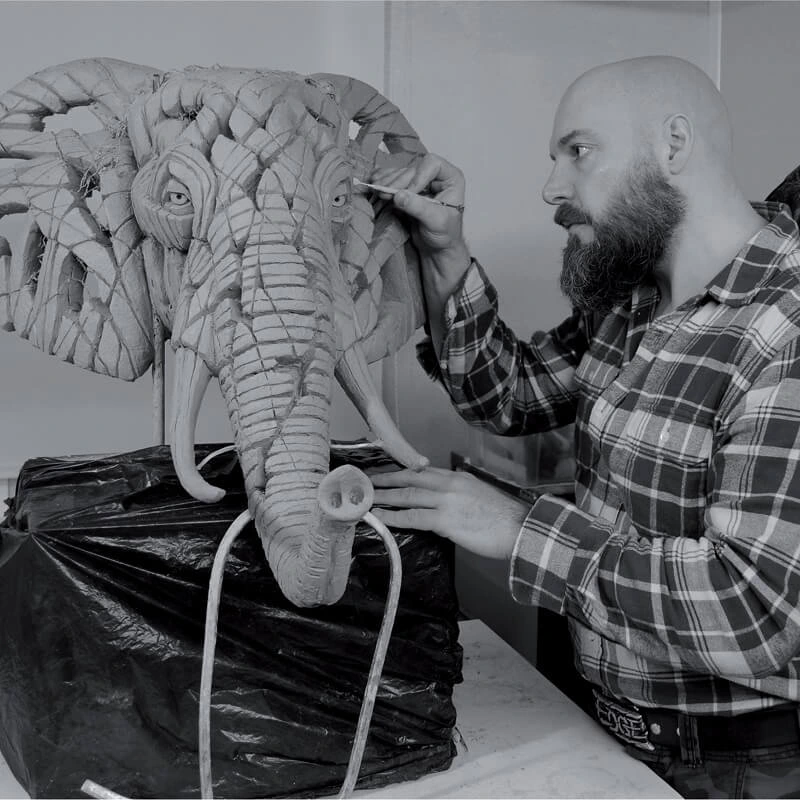How to create a masterpiece
Research & Design
This, of course, means any design can at most only be hinted at within the confines of a sketch and instead a piece really develops on the turntable alone, keeping the reference material down to a minimum and relying far more on the mind's eye as a source of aesthetic judgement.
Sculpting
To be able to evolve a sculpt with the energy and fluidity required means that a sturdy armature is needed. Its primary purpose is to have the strength to hold the weight of wet clay as it is violently formed into its desired shape with such purpose that leaves a deliberate rawness within the body of every piece. Of course, the composition is incredibly important and the engineering paramount in order to make a figure that stands solidly and without weakness so that an appropriate thickness of clay can be maintained throughout.
Moulding
We pride ourselves in our ability to keep the integrity of the original clay sculpture alive so nothing is more important than the first rubber mould. To harness the sheer weight of the material and avoid leakage we have to construct a very strong and perfectly sealed case to shroud the piece as closely as possible. Cut-lines are predetermined and appropriate bleeds are added to allow any trapped air to escape and only then can we begin to pour in the pre-vacuumed liquid rubber. Once the rubber has hardened the Mould is then skilfully cut allowing the removal of the now surplus clay sculpture.
Casting
A special
mixture of marble stone is then patiently poured into the prepared master mould, which is then lowered into a vacuum chamber to aid the bleeding process to remove those unwanted air bubbles that still may otherwise reside within the casing. Once cured and properly hardened, the cast can be removed to reveal the first clean sample.
Fettling, Sandblasting & Levelling
To prepare for painting a cleaning process begins where one of our ever-diligent fettlers will eliminate any unwanted mould lines and undesirable casting residue using small speed adjustable drills, knives and sanding blocks. Any pieces made in several parts are then assembled using steel pins, resin and glue before being levelled and then finally sand-blasted in order to give it a slight key.
Painting & Finishing
The piece then finds its way back to the Design Studio in order to complete its journey through the development phase. The colour patterns are developed and the chosen hues applied until a Studio Master is created. This is ultimately the piece with which all subsequent production pieces are compared against, to maintain our excellent level of continuity.













